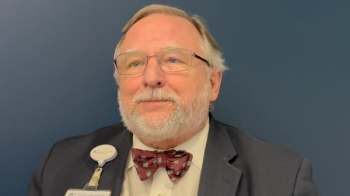
Applying Novel Radiotherapy Technology for Brain Tumors and Other Cancers
Timothy Chen, MD, highlights how technologies such as ZAP-X and proton therapy may improve outcomes for patients with cancer.
In a conversation with CancerNetwork® at John Theurer Cancer Center, Timothy Chen, MD, highlighted various novel treatment strategies that have impacted his care of patients with brain tumors and other types of cancer.
Chen, a board-certified radiation oncologist and medical director of the Central Nervous System Program at Jersey Shore University Medical Center and the director of Proton Therapy in the Department of Radiation Oncology at Hackensack Meridian Health, first discussed his use of the novel stereotactic radiosurgery modality ZAP-X for patients with brain tumors. According to Chen, this tool may allow for practices to administer radiation at submillimeter precision, which can spare normal tissue from receiving excess radiation.
Another technology that Chen highlighted included GammaTile, a radiation treatment that was developed for the management of brain tumors. He said that this collagen tile may help with administering strong radiation to precisely where the tumor is located, while also protecting healthy tissues to minimize the adverse effects from radiation therapy. Specifically, Chen stated that GammaTile may be beneficial for those with larger, difficult-to-treat tumors.
Finally, Chen discussed the potential applications of proton therapy and how it may improve outcomes in patients compared with standard radiotherapy. According to Chen, proton therapy serves a “great purpose” with what he described as a precise depth charge that can minimize toxicity during treatment.
Additionally, Chen described how proton therapy may help reduce the probability of developing mutations or secondary cancers among pediatric patients. He highlighted the potential benefit of this modality based on a specific case in which a pediatric patient with myxopapillary ependymoma experienced improvements in pain and urinary control following proton therapy.
Regarding these novel forms of therapy, Chen emphasized the notion of multidisciplinary care and said that practices should “work together as a team” when operating these technologies.
“[With] all this technology, it's not just used as it is; the technology brings us to work together,” Chen said. “I think multidisciplinary care is the future. People are no longer siloed…. We all work together.”
Newsletter
Stay up to date on recent advances in the multidisciplinary approach to cancer.






















































































